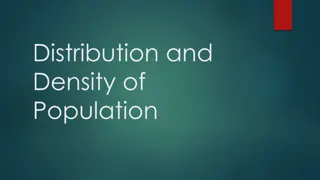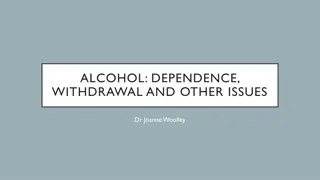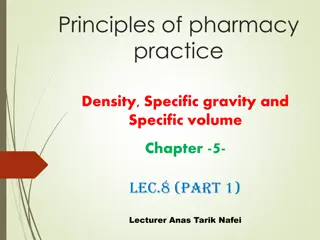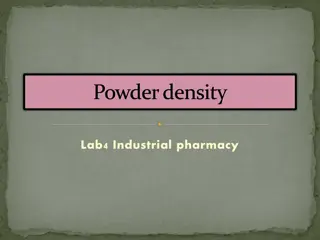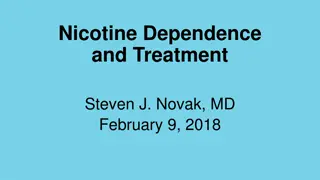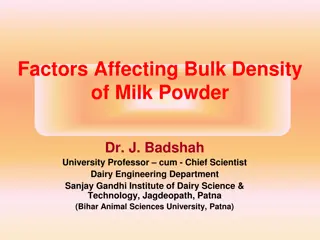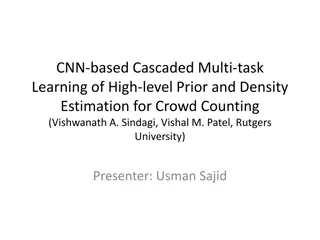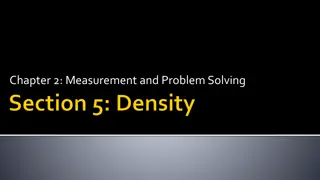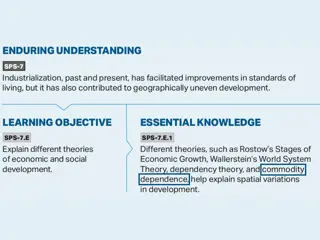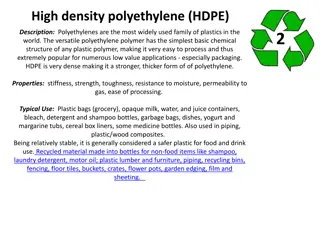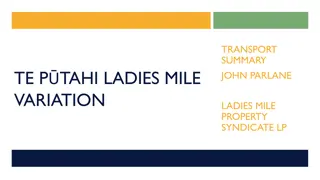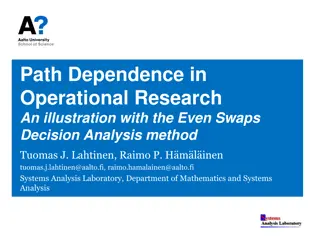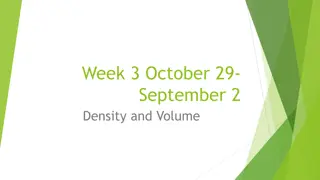Environmental Stochasticity and Density Dependence in Population Models
Explore vital rate simulations, density dependence, and habitat selection models in the context of single species population growth. Learn about important calculations, useful distributions, and the mechanisms behind environmental stochasticity and carrying capacity constraints in population dynamics.
Download Presentation

Please find below an Image/Link to download the presentation.
The content on the website is provided AS IS for your information and personal use only. It may not be sold, licensed, or shared on other websites without obtaining consent from the author. Download presentation by click this link. If you encounter any issues during the download, it is possible that the publisher has removed the file from their server.
E N D
Presentation Transcript
Final Week! Monday: vital rate simulations, density dependence (HW2) Wednesday: Habitat selection models by Sonya, Tess, Gwyn Readings and R-code posted ASAP Thursday Class wrap up, additional resources Discussion: 1-2 ppt slides for each model Available for final project consultations: Mon. 3:30-4:30p Tues. 2:00-3:00p Weds. 11:30-12:30p
Modeling vital rate stochasticity vitalsim from Morris and Doak (Box 8.10) R-code on the class website Some important calculations are hidden in the popbio package
Some useful distributions Stdev -Log-Normal -Beta -Stretched Beta* where and are the mean and standard deviation of the variable s natural logarithm (by definition, the variable s logarithm is normally distributed).
Some useful distributions Beta [limit between 0, 1] Stretched Beta* [defined min/max instead of 0, 1] where and are the two parameter governing the shape, and B is a normalization constant to ensure that the total probability integrates to unity.
Environmental stochasticity -- complications Density dependence More complicated than for count-based models Simplest form: limit total abundance (carrying capacity, K) Ch.2 Morris & Doak Can also set K for individual vital rates (Ch. 8) Iberian lynx example
Environmental stochasticity -- complications Density dependence More complicated than for count-based models Simplest form: limit total abundance (carrying capacity, K) Ch.2 Morris & Doak Can also set K for individual vital rates More realistic to include mechanism of why certain stages/ages/classes are affected How do we make a single (or multiple) vital rates dependent on the population vector?
The traditional form of density dependence (R) R = S*e(-S/k) (S)
Converting to forms relevant to individual vital rates (sij) s0[Et] = s0(0) / (1+ Et) s0[Et] = s0(0) * e(- Et) Where s0[Et] = survival (s0) as a function of density [E] at time t s00 = survival when density is almost 0 = density dependent coefficient (larger = bigger penalty for survival) **Substitute sij for relevant stage/age
Converting to forms relevant to individual vital rates (sij) s0[Et] = s0(0) / (1+ Et) s0[Et] = s0(0) * e(- Et) **Beware that even for deterministic models, imposing density dependence (esp. Ricker) can result in cyclical population dynamics. See Fig. 8.9 in Morris and Doak. **And stochastic lambda is now meaningless (pop size bounded), but extinction prob. still informative (possibly also equilibrium Pop size)
Estimating density dependence: s0[Et] = s0(0) / (1+ Et) s0[Et] = s0(0) * e(- Et) Usually requires enough datapoints to regress log survival against initial stage density. Where a negative slope roughly equals - , and the intercept is log[s0(0)] (for Ricker) Where the inverse of the intercept is s0(0), and the slope divided by the intercept is (for B-H) **Allee effects possible to model but usually accounted for by extn threshold
Estimating density dependence: log[s0(0)] - log (sij) Ricker Initial density (E) Usually requires enough data points to regress log survival against initial stage density. Where a negative slope roughly equals - , and the intercept is log[s0(0)] (for Ricker)
Estimating density dependence: b m Beverton Holt log (sij) s0(0) = 1/b = m /s0(0) Initial density (E) Usually requires enough data points to regress log survival against initial stage density. Where the inverse of the intercept (b) is s0(0), and the slope (m) divided by the intercept is (for B-H)



